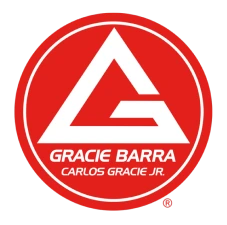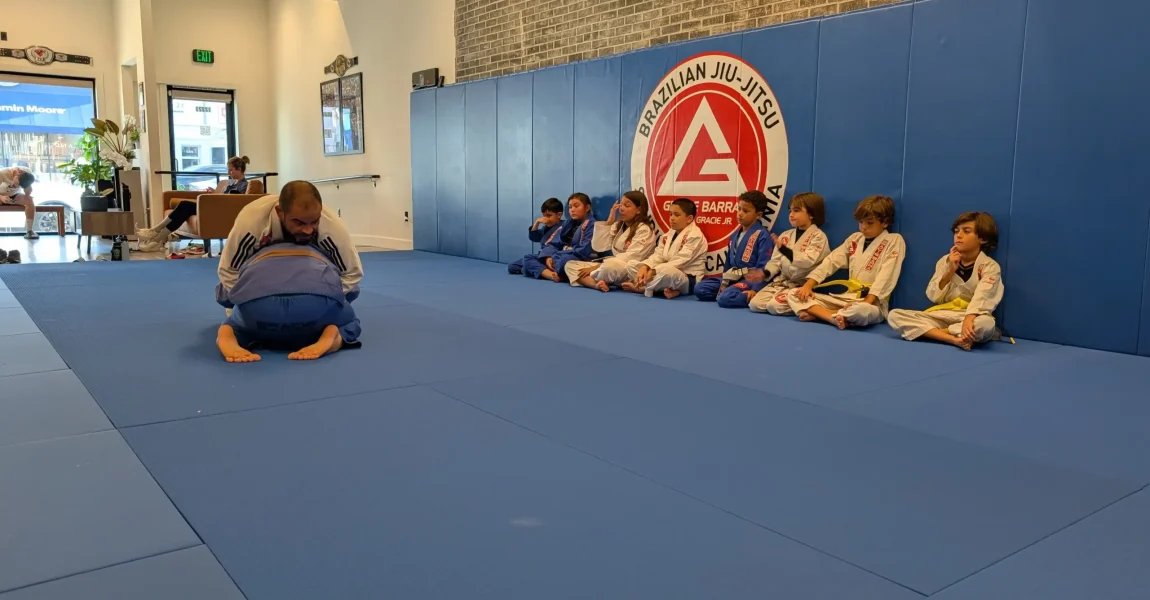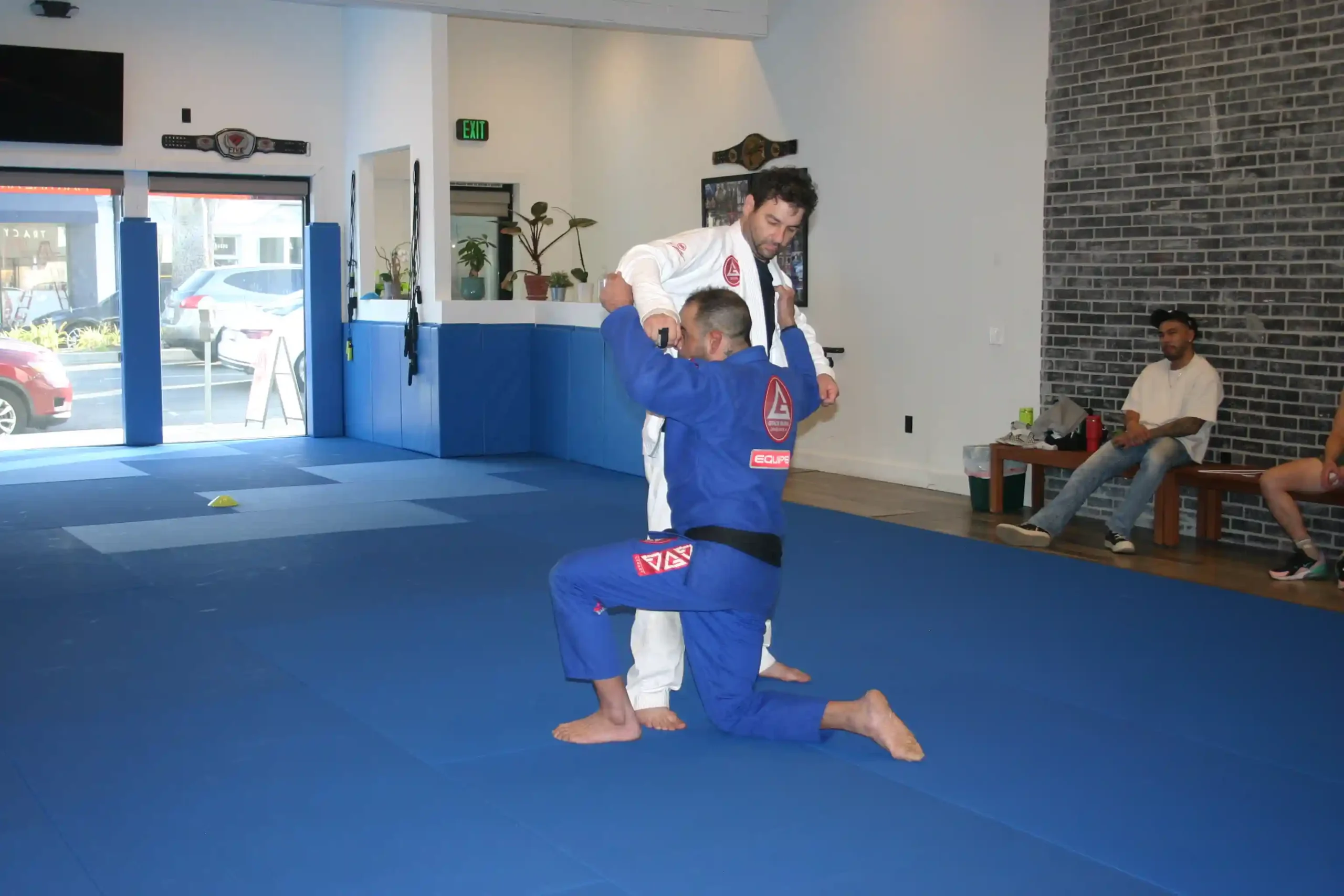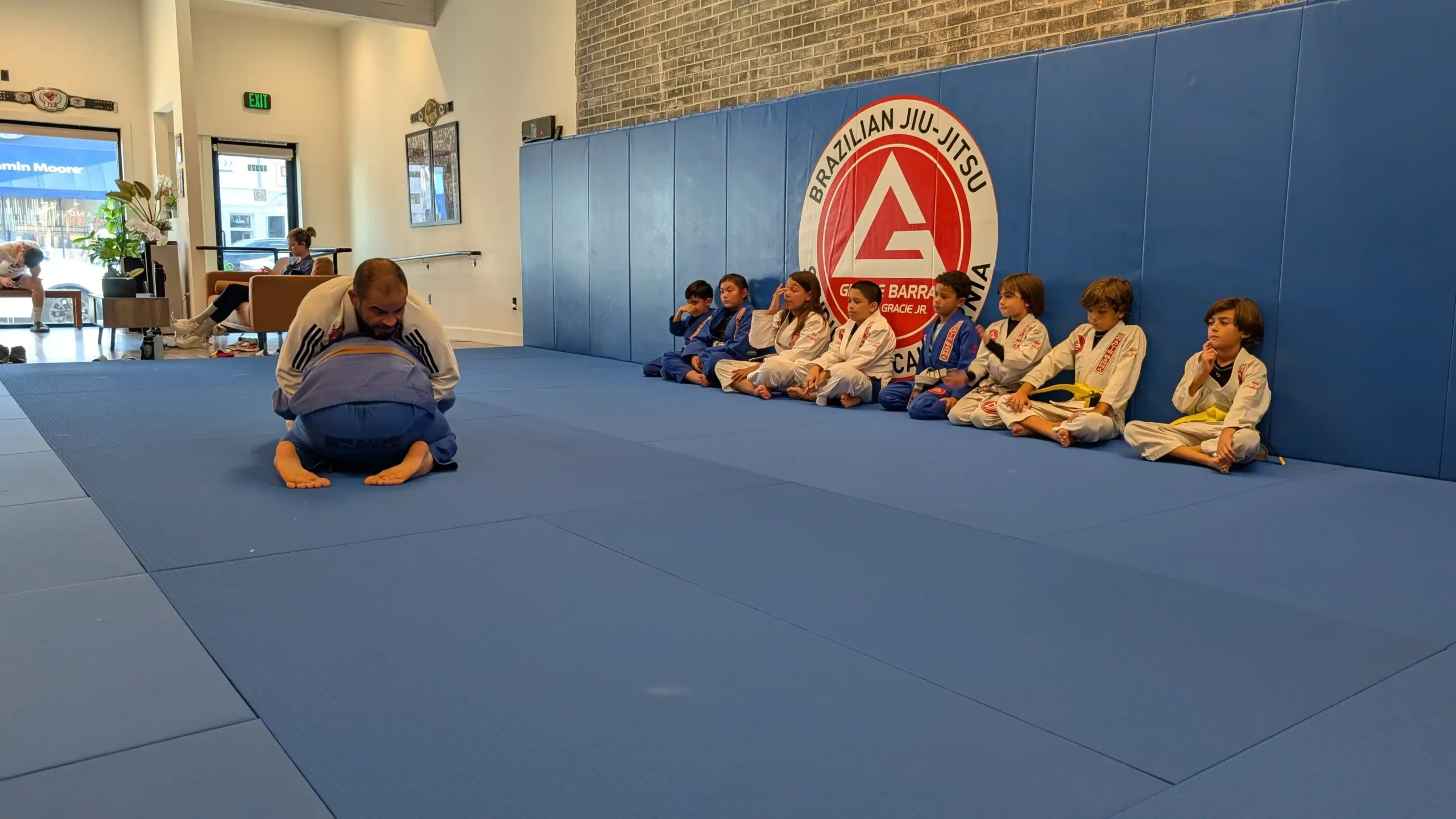Brazilian Jiu-Jitsu is famous for being both practical and works for everyone. Whether you’re exploring jiu jitsu classes for the first time or looking for a trusted Brazilian Jiu-Jitsu Los Angeles academy, sparring is the fastest way to improve. Many beginners, though, pause when they hear the word sparring. Maybe you picture hard moves, or you’re worried you’re “not ready.”
At Gracie Barra Studio City, we see this every week and we can assure you sparring is safe, guided, and one of the quickest ways to grow your skills.
What Is Sparring in Jiu-Jitsu?
In most academies you’ll hear sparring called rolling or live training. It’s the moment when you and a partner apply moves in real time, but it isn’t a free-for-all. Rounds are timed, instructors are present, and intensity is set to your level.
Think of it as the bridge between drilling a move and being able to use it naturally. Drilling builds the step-by-step practice sparring tests the plan under easy challenges.
Gear & Clothing Tips for Beginners
When starting sparring in Brazilian Jiu-Jitsu, wear a clean BJJ gi if your class requires it, or comfortable athletic clothes for no-gi sessions. Make sure your clothing fits well to avoid getting caught in grips. Remove jewelry and tie back long hair to stay safe and focused.
Why Sparring Matters in Jiu-Jitsu
The benefits of sparring in jiu jitsu go far beyond learning moves; they improve reflexes, decision-making, and mental toughness. It is one of the most important parts of training. Here is why it matters-
- Real-Time Application of Techniques
Rolling takes what you’ve drilled escapes, sweeps, submissions and turns it into natural reactions. You start to feel timing and movement instead of thinking through every step. - Reflexes and Reaction Speed
Regular BJJ sparring builds muscle memory so you respond automatically, staying calm when the pace quickens. - Better understanding of moves
Every round shows you what works for your body type and what needs improving. Mistakes become lessons you can take back to class. - Cardio and Conditioning
Few workouts match the intensity of Brazilian jiu jitsu sparring. Rounds improve endurance, breathing, and overall fitness. - Problem Solving & Mental Toughness
Often called “physical chess,” Jiu-Jitsu forces you to make decisions while under pressure. Over time, you develop patience, confidence, and emotional control. - Respect & Teamwork
Because partners rely on each other for safety, spar jiu jitsu sessions build trust and friendships that keep you motivated.
Transform Your Fitness Journey—Book a Free Trial Class!
Mental Benefits of Sparring
People usually focus on the physical side of jiu-jitsu, but the mental benefits of sparring in jiu-jitsu are just as powerful-
- Stress relief- It acts like moving meditation, clearing your mind.
- Emotional control- It puts you in a high pressure situation, yet you learn to stay calm instead of panicking.
- Problem – solving under pressure – you develop quick thinking and adaptability in stressful situations.
- Mind body awareness- sparring builds awareness of your breathing, energy, and limits.
Is Sparring Safe for Beginners?
Yes At our Los Angeles Jiu-Jitsu academy, new students start with positional sparring limited scenarios like escaping a common hold in BJJ before moving to complete sparring sessions. Instructors pair beginners with experienced partners and focus on communication and early tapping. Safety is always the top priority.
Why it can be safe-
- Controlled environment
- Tap culture
- Gradually harder levels
Tips for safe beginner sparring
- Start slow
- Pick good partners
- Communicate
- Always tap early
- Listen to your body
Injury Prevention Techniques Beyond Tapping
Avoid injuries by warming up before every session. Gentle jogging, joint rotations, and dynamic stretches prepare your body. Focus on mobility exercises for hips, shoulders, and neck. After training, cool down with light stretching to reduce soreness and maintain flexibility.
How Often Should You Spar?
For steady progress, aim to spar two or three times a week alongside regular technical classes and mobility work. Listen to your body; rest and recovery are as important as the rounds themselves.
Common Beginner Fears And the Reality
Fear | Reality |
“I’ll get hurt.” | Classes are supervised, and safety rules are strict. |
“I’m not good enough to spar.” | Sparring is how you get good; it isn’t a test. |
“I’ll get submitted constantly.” | Everyone taps. Each tap is a lesson. |
“I’m too old or out of shape.” | Rounds can be scaled to any intensity. |
What to Expect in Your First Session
You’ll likely start with positional drills. Expect to tap, breathe, and learn. Choose training partners known for being technical and cooperative. Ask questions after each round your teammates and coaches will be happy to help.
Tips to Get the Most from Sparring
- Begin at a controlled pace, don’t rush.
- Be a good partner: communicate and avoid muscling through moves.
- Watch others roll to pick up strategies.
- Keep a short journal of what you learned.
- Focus on improving one small detail each round.
Great for everyone, students of all ages and levels. As a woman, I felt very included and welcome. The facilities are excellent, with a spacious training area and supportive staff. I would recommend this academy to anyone interested in learning BJJ.’
~ Student at Gracie Barra Studio City
Step Onto the Mat and Start Your BJJ Adventure!
Progress Tracking for Sparring
Keep a small journal of your sparring sessions. Note moves you tried, what worked, what didn’t, and any personal goals. Tracking your progress helps you see improvement, remember key lessons, and stay motivated over time.
For Teens and Adults
Sparring builds focus and discipline in teens, helps adults manage stress, and offers a lifelong path for physical and mental growth.
Sparring and Long-Term Progress
Belts in BJJ aren’t awarded for memorizing moves. They’re earned by applying them. Regular BJJ sparring accelerates the journey from white belt upward.
Recovery After Rolling
Recovery after rolling is just as important as the training itself. Your body and mind need time to reset so that you can keep showing up on the mats. Here are some key ways to recover well after sparring in jiu jitsu.
- Rest and sleep- you should have deep sleep when your body repairs muscle and consolidates memory. Take up-to 7-9 hours of sleep.
- Hydration – rolling depletes fluids fast, especially if you’re training in a hot gym.
- Nutrition – prioritise protein for muscle recovery and carbs for glycogen replenishment.
Ready to Start Rolling?
Sparring is where real growth happens. It isn’t about winning or losing; it’s about learning every time you step on the mat. Whether you’re seeking advanced jiu jitsu challenges or brazilian jiu jitsu for beginners, Gracie Barra Studio City offers structured classes and safe, supportive sparring sessions.
Take the first step today: book a free trial or explore our jiu jitsu membership options.
Visit our Los Angeles jiu jitsu academy and see why students searching for a ‘jiu jitsu academy near me’ trust us for world-class Brazilian Jiu-Jitsu training.
Frequently Asked Questions
No. Sparring is encouraged but optional. Many students focus on technique and conditioning first, then add sparring when they feel comfortable.
Yes by training at a reputable academy, tapping early, and communicating with your partner. Good instructors pair beginners with experienced, controlled partners.
Your instructor will guide you. Most students start with light positional sparring once they’ve learned basic movements and can stay calm under pressure.




